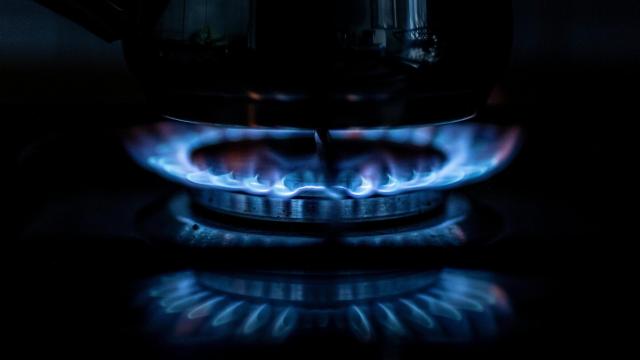It turns out that even when your gas stove is off, it’s still a complete disaster.
A new study from a team of researchers at Stanford University published in Environmental Science & Technology finds that various models of gas stoves emit a surprising amount of methane even when not in use — and it could have a real impact on overheating the planet. Since methane is about 80 times as potent as carbon dioxide, the study finds that total methane emissions from gas appliances across the U.S. could have the same impact on the atmosphere as carbon emissions from 500,000 cars over a 20-year period.
There are ample reasons to kick gas stoves to the curb. They’re indoor air pollution nightmares. They also lock in planet-heating emissions. But even though the gas used in stoves also contains methane, there’s been shockingly little research on just how much emissions come from gas-powered appliances like stoves versus emissions from the infrastructure used to transport gas like pipelines.
“Surprisingly, there are very few measurements of how much natural gas escapes into the air from inside homes and buildings through leaks and incomplete combustion from appliances,” Eric Lebel, the study’s lead author and a graduate student at Stanford, said in a release. “It’s probably the part of natural gas emissions we understand the least about, and it can have a big impact on both climate and indoor air quality.”
To do the analysis, the Stanford researchers studied levels of methane and nitrous oxides — both produced by the combustion of natural gas that stoves use as fuel — in 53 California homes, including when the stove was first turned on, while the stove was in use, and, importantly, when it was off. The gas stoves in these houses ranged in age from 3 to 30 years old and included models from 18 different brands.
The team found that, on average, gas stoves leak about 1.3% of the fuel they use as unburned methane. That may not sound like much, but it could mean that estimates of emissions from individual households are much higher than current ones. And considering that there are about 40 million gas stoves across the U.S., all that methane can add up quickly.
Even more worryingly, more than 75% of methane emissions the study measures came from gas stoves that were turned off. This suggests that it’s not the usage of the stoves that’s causing the emissions, but rather the fittings between the stove and in-home gas lines that are letting most of that methane escape into homes and, eventually, the atmosphere.
There were some differences in emissions based on the type of appliance. The worst offenders, the team found, were gas stoves that used a pilot light to spark a flame; those pilot lights emit the same amount of methane when turning on and off as is emitted during 10 minutes of cooking. In a somewhat surprising finding, the researchers didn’t find any relationship between the age of an appliance and how much methane it released; in some cases, an old gas range can actually be more climate-friendly than a newer one.
And lest you forget about the health impacts of these stoves, the researchers measured that too. The study finds that someone in a small kitchen with bad ventilation or who don’t use their hoods can surpass Environmental Protection Agency limits for safe nitrous oxide exposure in a matter of minutes while cooking.
Gas stoves have been at the centre of the fight to address climate change — and those looking delay any action. Cities across the country are moving to ban gas hookups as part of a larger strategy to address climate change. Yet natural gas production is rapidly becoming a big contributor to overall emissions growth. The industry itself has been in a panic about the bans, and it’s found partners willing to lend a hand in Republican politicians. Florida Republicans passed a bill that was signed into law by Gov. Ron Desantis last year that requires cities to keep on using natural gas that was drafted, reporting from the Miami Herald revealed, in part by the utility industry. The new study makes it clear, though, that gas has to go.
And while I love my gas range, it might be time to call my landlord and see if he’d be up for an electric upgrade.
